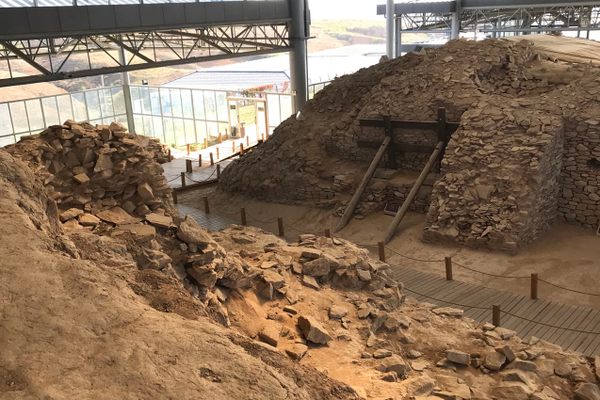Rök Rune Stone
This encrypted monolith protected a secret of Norse mythology by hiding in a church wall for over a millennium.
What was once building material in a church wall in the Swedish countryside is today a unique piece of history, telling stories of battles, kings and heroes long gone. Yet for centuries, passersby were unaware that this monolith contained a secret piece of old Norse mythology that had lain dormant for more than a millennium, forgotten by locals and scholars alike thanks to its encrypted etchings.
The Rök Rune Stone is unlike any other archaeological find in the world. It’s believed to have been carved in the first half of the 9th century, but as the old Norse belief system began losing ground to Christianity, the stone’s mythological purposes were forgotten. It was unceremoniously repurposed into building material for a church in the 12th Century.
There it stayed until 1843, when a team of construction workers discovered that the odd rock had carvings on five sides, not just the one visible to the eye. At that time, workers made a sketch of what they could see of the stone before, once again, re-embedding the stone into the church wall. Only in 1862 was the stone finally removed and put on display in the open churchyard, where it remains today.
After a century and a half of study, scholars have discovered many of the Rök Rune Stone’s previously guarded secrets. Ranking among the world’s oldest runic inscriptions in stone, the story it relates is one of Gods, war and a father losing his son in a battle, belonging to what is believed to be a fragment of an old Norse mythology long forgotten. The tale also makes a reference to the Ostrogothic king, the emperor of the western Roman Empire Theodoric the Great. Though scholars are uncertain why this would have been the case, it appears the inscription on the Rök Rune Stone was encrypted during the carving process; its scribes used special ciphers that made the story appear purposefully displaced, thereby making it harder to read for the average reader.
While archeologists have been deciphering the Rök Rune Stone’s contents, etymologists have been hard at work on a different conundrum. In a peculiar turn of phrase, they’ve traced the history of the stone’s name to the people who discovered it in the church wall, who gave it the same name as the nearby village of Rök. Though this makes complete sense, a long ago the village took its name from the stone. It has been found that the stone – pre- rediscovery in the church wall – was called “rauk” or “rök” in old Norse, which meant “skittle-shaped stack/stone.” In essence, the rock was named after the village, which was named after the rock, whose name is Rök which means a rock or stone.
Community Contributors
Added by
Edited by
The Atlas Obscura Podcast is Back!



















Follow us on Twitter to get the latest on the world's hidden wonders.
Like us on Facebook to get the latest on the world's hidden wonders.
Follow us on Twitter Like us on Facebook